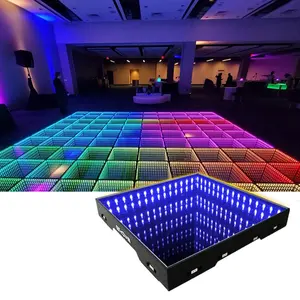Emphasizing this Value of Illumination in Maintaining Performance Surface Protection
Wiki Article
Lighting plays a vital role in guaranteeing the security of dance floors, whether in a nightclub, a community center, or a school event. Proper illumination helps to create a safe environment by enabling dancers to perceive their environment clearly. This clarity is essential for preventing accidents, such as trips and falls, which can occur on busy or irregular surfaces. Additionally, good lighting aids in ensuring that all dancers are cognizant of their area and the individuals around them, minimizing the chance of collisions or other incidents on the dance floor.
One of the main functions of illumination in a dance setting is to improve visibility. Bright and well-placed lights illuminate the floor, making it simpler for dancers to navigate their movements. This is especially important in environments where the floor may be packed or where different dance styles demand various levels of space. When dancers can see where they are walking and how much space they have, they can dance with greater confidence and avoid potential dangers. For instance, a well-lit floor enables dancers to identify spills or obstacles that could lead to risky situations.
In addition to assisting dancers visualize better, lighting can also contribute to the overall ambiance of the event. While some dance venues may use dim lighting for aesthetic purposes, it is important to find a balance between atmosphere and safety. Flickering or flashing lights can disorient dancers, making it hard for them to maintain their bearings. Therefore, including soft, steady lighting with resource brighter spots in critical areas, like emergency exits and pathways, can enhance both the vibe and security of the dance floor. This considerate approach promotes a vibrant but safe dancing experience.
Moreover, it is crucial to take into account the types of lighting that are most suited for dance floors. Different light fixtures, such as light-emitting diodes, spotlights, and ambient lighting, can serve various purposes. LED lights are energy-efficient and can be set to produce different hues and effects without sacrificing brightness. Spotlights can highlight specific areas, such as a stage or a group performance, while ambient lighting sets the overall mood. By thoughtfully selecting and positioning these lighting options, event organizers can ensure that the dance floor remains a secure and pleasant space for everyone.
In conclusion, the importance of proper lighting in ensuring dance floor safety cannot be overstated. It not only provides the essential visibility for dancers to move freely and safely but also helps create an inviting environment that encourages participation. Event planners and venue managers must prioritize lighting design when organizing dance events to reduce risks and enhance the overall experience. By doing so, they can foster a fun, energetic atmosphere while keeping like this safety at the forefront of their planning strategies.
